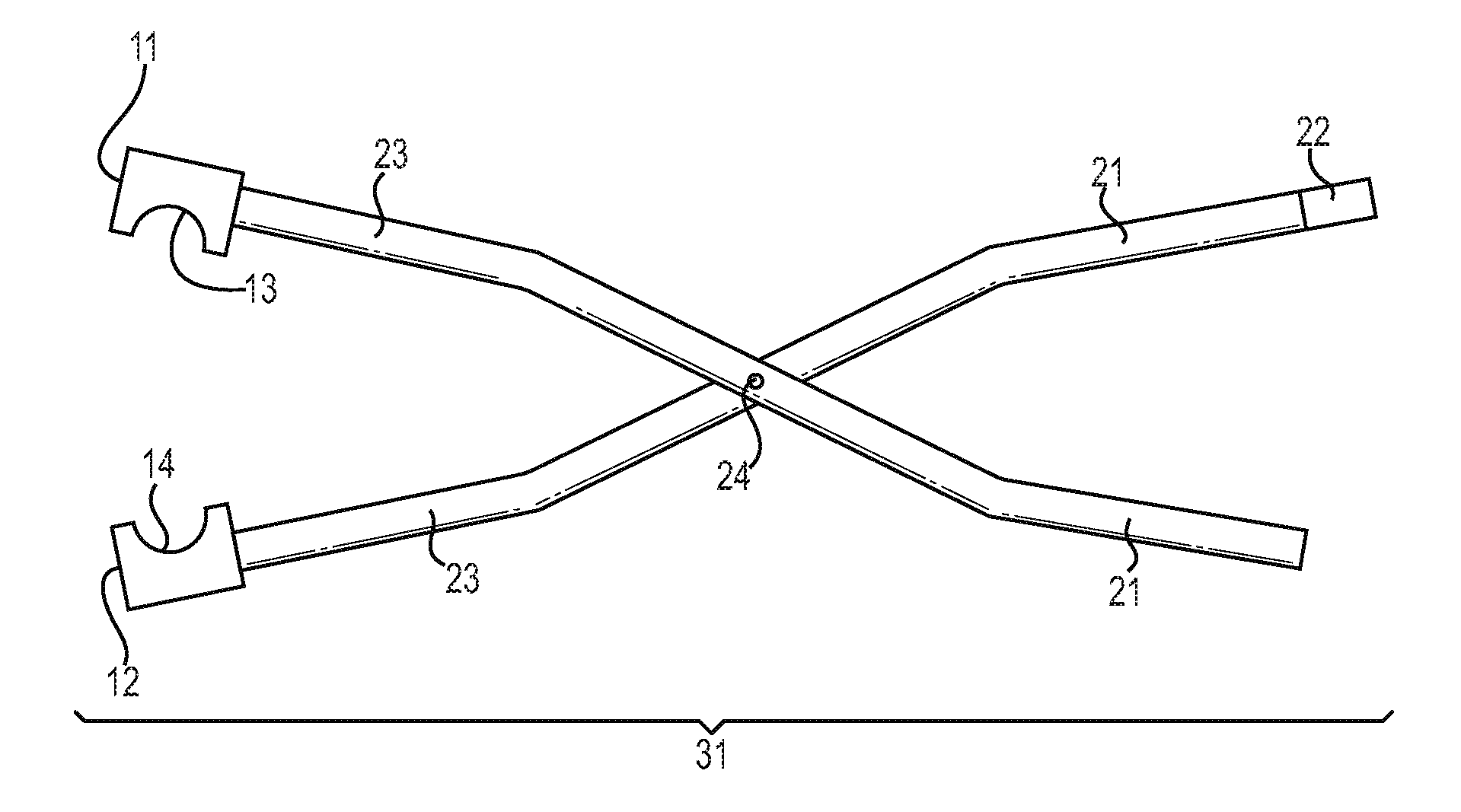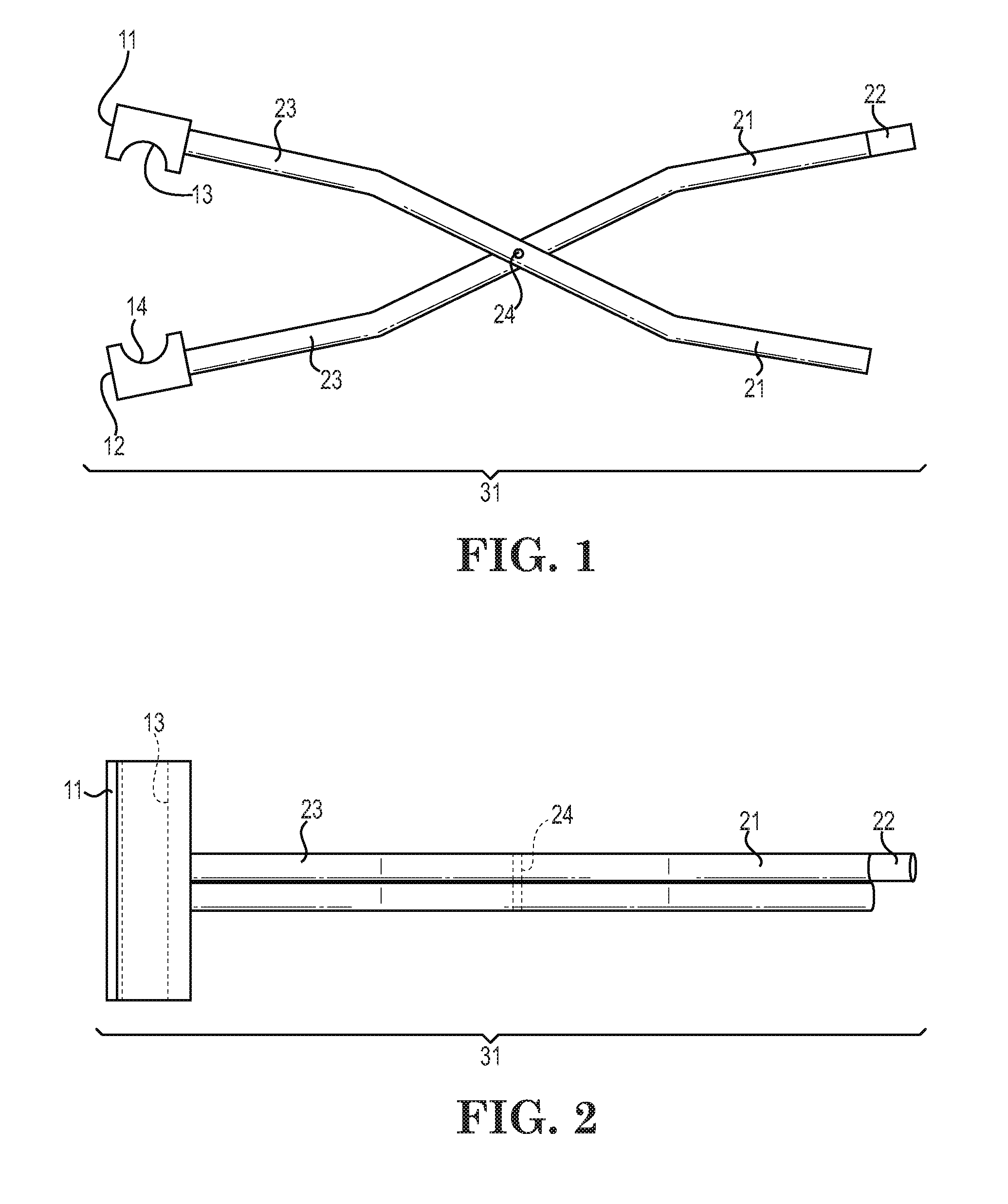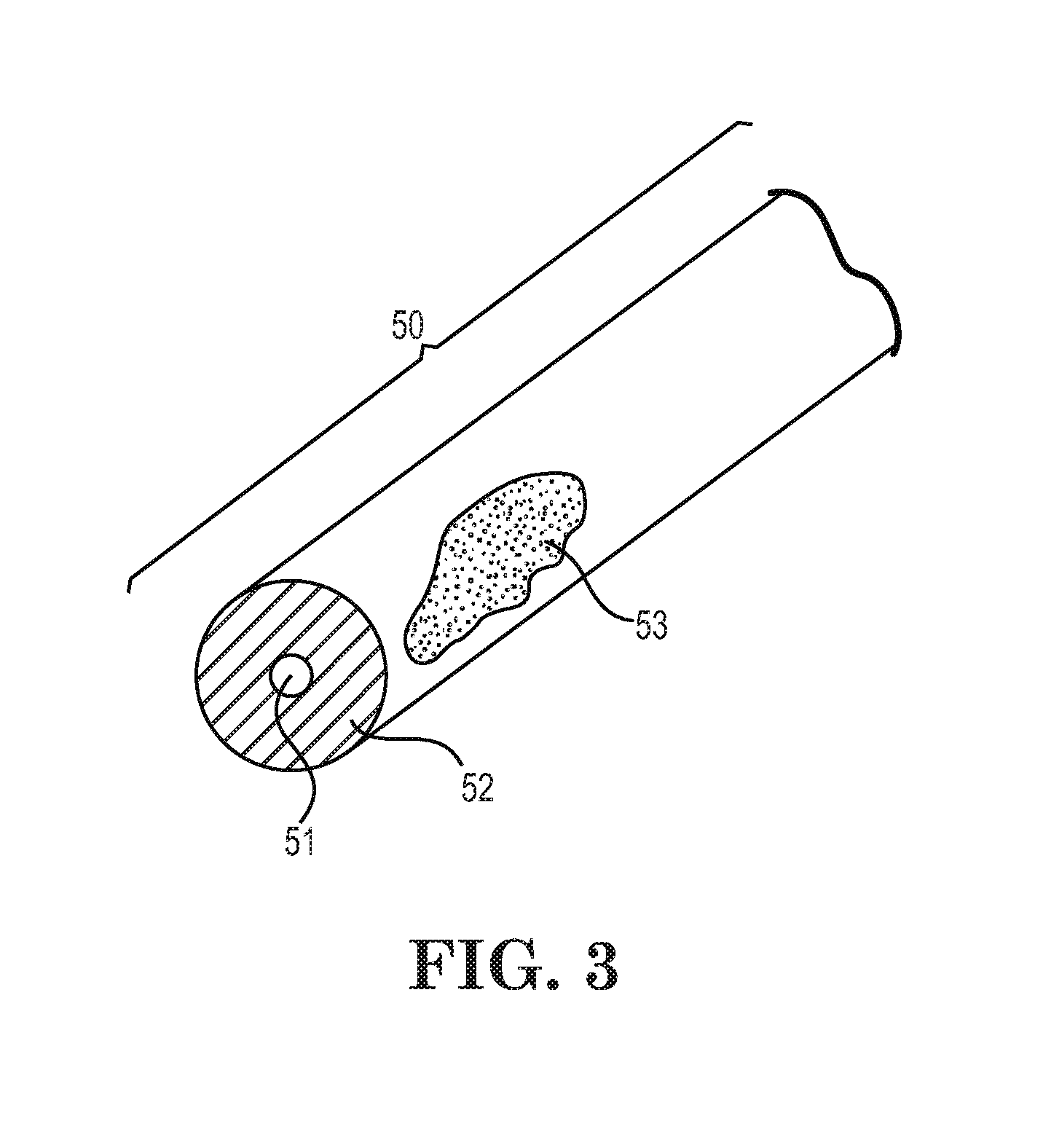Low-melt poly(amic acids) and polyimides and their uses
a technology of low-melt polyimide and polyimide, which is applied in the direction of metal layered products, synthetic resin layered products, electrical equipment, etc., can solve the problems of high cost of preparing such parts from polyimide materials, and easy damage to mechanical and electrical components
- Summary
- Abstract
- Description
- Claims
- Application Information
AI Technical Summary
Benefits of technology
Problems solved by technology
Method used
Image
Examples
example 1
[0144]PAAs and polyimides were prepared by a polymerization reaction of a dianhydride and a diamine. The polymerization reaction initially forms a PAA. The PAA can be converted to the corresponding polyimide by heating to 150° C. In several cases, the reaction also included an end capping cross-linker.
[0145]Examples of dianhydrides found useful were bisphenol A dianhdyride (BPADA) and B-4400:
[0146]
[0147]Diamines evaluated and found most useful in the invention included the aliphatic diamines DAD, XTJ-542, and DAPS, and the aromatic diamine ODA:
[0148]
[0149]The cross-linker tested was maleic anhydride. Acrylic acid, methacrylic acid, allyl alcohol, allyl amine, and vinyl amine are other useful cross-linkers.
[0150]
[0151]Several formulations which have undergone extensive evaluations include those produced from the following reaction mixtures:
[0152]BPADA / DAPS / ODA / MAA (9:8:2:2)m (Polyimide 1)
[0153]BPADA / XTJ-542 / ODA / MAA (4:2:3:2)m (Polyimide 2)
[0154]BPADA / XTJ-542 / DAPS / ODA / MAA (4:2:1:2:2)m...
example 2
Laboratory Preparations of Low-Melt Polyimides and PAAs
Sample 1
[0156]70 ml of NMP solvent and 8.75 g of DAD were mixed in a 200 ml, three necked round bottom flask fitted with a nitrogen (N2) inlet, thermocouple, and stopper. This amine mixture was heated to 70° C. in order to melt and dissolve the amine. The solution was cooled to 55° C. after which 26.0 g of BPADA flake were added to the stirring amine solution. Rapid stirring was needed to keep the anhydride flake from clumping together during the early part of the reaction. An exotherm temperature increase from 55° C. to 75° C. was noted. The temperature and stirring of the reaction mixture was maintained at 40° C. for 18 hours after which the solution was filtered through a paper filter to remove any insoluble debris. The final product was a viscous, amber liquid containing approximately 33% PAA.
Sample 2
[0157]50 ml of NMP, 3.60 g (0.018 mole) of ODA, and 24.96 g (0.024 mole) of XTJ-542 polyether diamine were mixed in a 200 ml, ...
example 3
[0163]PAAs were prepared as described in Example 2 and imidized on substrates as described in Example 2 to form polyimides, and the polyimides were tested as adhesives.
[0164]Polyimide 5 was formed from BPADA and ODA.
[0165]Polyimide 6 was formed from BPADA and hexamethylene diamine.
[0166]Polyimide 7 was formed from BPADA and DAD.
[0167]Polyimide 8 was formed from BPADA and DYTEK A (2-methyl-1,5-pentamethylene diamine).
[0168]In one example, the PAA was applied to one side of a 1 inch square of KAPTON HN film (5-mils thick) and then baked to imidize it. LOCTITE 615 HISOL, an epoxy, was used to glue the KAPTON side to a metal plate and to glue the polyimide side to another metal plate. The metal plates were then pulled directly apart in a lap shear test until the sandwich sheared. The results are shown below in Table 1. The epoxy failed before the polyimide did. The shear loads shown below are actually the loads at which the epoxy failed. The strength of the polyimide is at least these v...
PUM
| Property | Measurement | Unit |
|---|---|---|
| diameter | aaaaa | aaaaa |
| thickness | aaaaa | aaaaa |
| bonding temperature | aaaaa | aaaaa |
Abstract
Description
Claims
Application Information
 Login to View More
Login to View More - R&D
- Intellectual Property
- Life Sciences
- Materials
- Tech Scout
- Unparalleled Data Quality
- Higher Quality Content
- 60% Fewer Hallucinations
Browse by: Latest US Patents, China's latest patents, Technical Efficacy Thesaurus, Application Domain, Technology Topic, Popular Technical Reports.
© 2025 PatSnap. All rights reserved.Legal|Privacy policy|Modern Slavery Act Transparency Statement|Sitemap|About US| Contact US: help@patsnap.com



